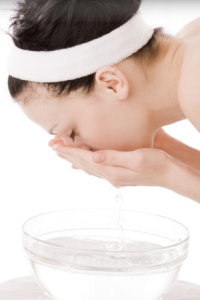
If you’re looking for Japanese skin care products online because you think that the Japanese have the best skin care products then I’ll have to tell you, that’s not the big Japanese skin care secret. It’s actually about what Japanese women eat.
What could Japanese women eat that makes their skin so good? Its seaweed. Yes, thats the secret, eating seaweed.
It’s a seaweed called Phytessence Wakame. The Japanese eat if both fresh and dried and it has been a big part of the regular Japanese diet for a long time, centuries. And only recently it’s been discovered that Phytessence Wakame is just great for your skin.
And it might only be recently that science has found out why Phytessence Wakame is so good for the skin, but for a long time Japanese women have known that it’s good for the skin and so it has been sought after for this reason.
Phytessence Wakame is packed with all sorts of vitamins and minerals, all good for your skin. For example many of the B group vitamins.
And there’s more, like 15 times more calcium than milk. Calcium is excellent for the skin and Phytessence Wakame is full of all sorts of good antioxidants as well.
But theres more, and this is where Phytessence Wakame really benefits your skin. It gets a little complicated but bear with me.
In your skin is found an acid called hyaluronic acid. It is very good for your skin and helps keep your skin elastic and smooth and well toned. All good. And of course good skin elasticity and toning helps keep skin sagging and wrinkles away. What are many Japanese women missing? Wrinkles.
And there is also an enemy of that good hyaluronic acid. It’s called hyaluronidase and it breaks hyaluronic acid down. Not good.
So here’s the secret. Phytessence Wakame helps minimize the effects of hyaluronidase, so you have more of that good hyaluronic acid in your skin. You skin is more supple and elastic and healthy, and has less wrinkles and sagging. That’s the big Japanese skin care secret.
But there’s even more. Other ingredients in Phytessence Wakame help reduce the effects of UV on the skin too, one of the major factors in skin aging.
So can you see now why Japanese women prize Phytessence Wakame so highly? Because although they didn’t know there were scientific reasons why it was so good for the skin they certainly knew that it was good for the skin. It’s grown extensively in Japan.
So perhaps you should be eating seaweed every day for breakfast? Or perhaps looking for that secret range of Japanese skin care products that contain Phytessence Wakame.
No in both cases. Because the best skin care products already contain Phytessence Wakame and are readily available to you, through a small but fine niche skin care company.
And you can try their products risk free, because they offer a full money back guarantee. Because theyre small and cant advertise on TV you wont have heard of them, so decided to offer a money back guarantee.
Because they know that there isn’t much risk for them. That once you’d seen for yourself how well skin care products with Phytessence Wakame in them work you’ll keep using them.
So, what’s that Japanese skin care secret? It is Seaweed.




